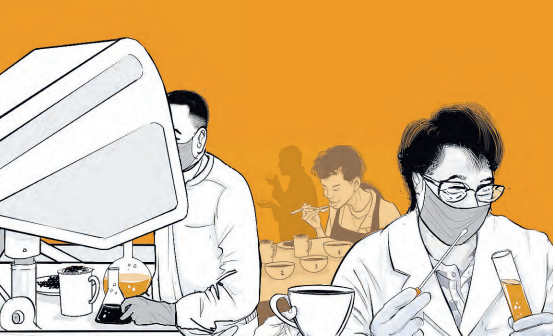
BY DAVID GACHOKI
I recently wrote an article on using technology in tea tasting following reports by sections of the media where senior government officials were quoted arguing for the use of technology in tea tasting for quality analysis and determination.
I have also come across many tea industry players who wonder whether tasting is done by a machine that individual companies can buy for their own use.
For all I know, I want to offer to clear this mystery.
Remember, quality of tea is critical in the eventual valuation and pricing, which is done through an organoleptic process where the final manufactured tea is analysed by looking at it, smelling it and brewing to asses the liquor by tasting and looking at the liquor body formation—basically, using sight, smell and taste.
The results are then used to put a value and price on the product.
This quality analysis process is therefore sacrosanct to both the producer and the buyer.
Further, those buying the tea do so because they can put it in a market for commercial interests, mostly in packed and branded form.
The final buyers in the market are also the final consumers and want the packed brand they are used to buying to be consistent in substance so they can continue buying it.
As such, traders are very particular about what they buy so it fits into the brands they pack and sell.
As I stated in that article, modern science has over the years established the relationship between chemical constituents in tea that influence its taste, colour, smell, and favour, which impact liquor brightness, briskness, total colour, strength, and flavour.
These chemical components contribute to the different sensory quality parameters against which the quality of tea is determined.
These relationships between the behaviour of the chemical components can be described by mathematical functions.
The results of various such analyses have been collaborated by expert tea tasters, hence, the basis of technology in tea tasting.
This is what is called wet chemistry.
The mathematical functions are further developed into algorithms that allow for measurable values for each quality parameter and then all of them together to give composite quality scores which can be used at both production and trade.
At production, it allows a tea-processing factory to not only establish the quality levels they are producing but also help trend and monitor its quality.
These scores can also be used in establishing the most probable value for those teas at the prevailing market levels.
Part of the quality analysis enables picking any quality gaps for timely interventions, leading to quality consistency and improvement.
This way a factory can make conscious decisions in setting quality targets and engaging the markets objectively and meaningfully, armed with information and data.
Traders, and especially packers, can use the same technology to match what they are looking for with what is on offer with great precision and accuracy.
Indeed, this ends up being the best tool a packer can use in ensuring the blends they pack achieve the highest degree of accuracy and consistency, as well as creating other blends and brands for their marketing warfare.
This technology is a big win for all players across the value chain.
Producers and traders have for the first time a scientific tool to use in their businesses that will also help them avoid accusations of conspiracy and opaqueness.
This technology opens trading in a much bigger way by allowing more players to participate more effectively, thereby creating more competition.
The much-needed sustainability of the tea industry will get a major boost through the adoption of this technology, with its super efficiencies and cost savings.
Countries such as Kenya can now easily set national quality targets and create initiatives such as Common User Facilities to fast-track value addition for global offerings.
It’s about time key decision-makers in government and companies along the tea value chain embraced, owned and ran with this super technology, as it is right here with us.
















